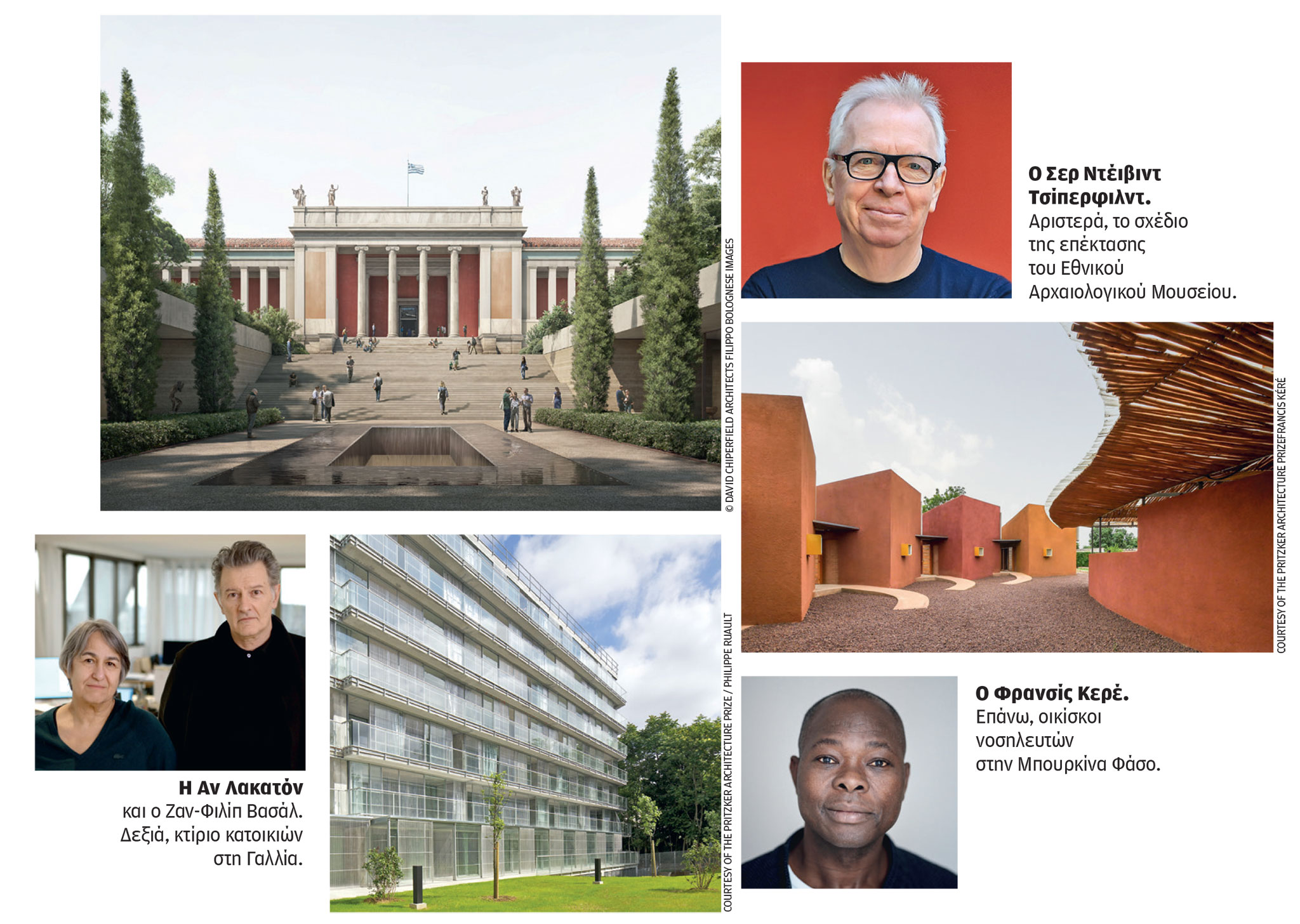
In August 1933 National Technical University of Athens, even before it was a century old, hosted the important 4th Conference on Contemporary Architecture. Eminent speakers included Le Corbusier, Karl Moser, Siegfried Gideon. Ninety years later, the Averof building welcomed him with a panel. Sir David Alan Chipperfield, Anne Lacaton, Jean-Philippe Vassal, Francis Carré· Four great exponents of modern architecture with outstanding writing, international influence and awarded the Nobel for Architecture.
The Kavtanzoglu Hall, named after the architect who designed the school’s central two-story building, was jam-packed with people. Professors, designers, architects and many undergraduate and graduate students have been waiting on the stage for Sir David Alan Chipperfield, the famous “maestro” who will add the Pritzker Prize to his prizes tonight in the Ancient Agora. It was introduced by the chairman of the awards committee and the architect Alejandro Aravena during a discussion organized by the Pritzker Prize in collaboration with the School of Architecture and Engineering of Athens, Thessaloniki, Patras and the Technical University of Crete.
Chipperfield began his talk with the basic principles of urban planning, a topic also featured at a conference organized nearly a century ago. According to him, the term “urban planning” has not yet been invented, however, the needs that gave rise to it have not disappeared, and therefore we are here today, in the same space, being, however, at a much more disadvantageous position due to the environmental crisis – facing face exactly the same problems. We must provide everyone with good living conditions, tell about the importance of greenery in our lives, about the connection of natural light with architecture.
“As architects, we are trained to design buildings and we are brought up with the idea that design solves problems. Reconstruction of spaces, stairs, facades – this worries us. But we also need to ask ourselves how what “makes us” affects the environment,” he said. “Designing a building not only unleashes your creativity, it should also be seen as a social and cultural responsibility.”
“Don’t try to imitate us. There is nothing to copy. Challenge us, start over,” N. Chipperfield told NTUA students.
He repeated the word “responsibility” several times and combined it with the “elastic” interpretation of the word “restrictions”. Architecture cannot be autistic, he hinted, content to confirm it, but must explore the purpose, the essence of each architecture. He admitted that looking out the window of his office in London, the romantic intention of an architect who wants to create a better world for all “stumbles” before other forces. He argued that the ever-changing image of the city makes one think that architecture is now a vehicle for projection and sensationalism. “When you think of architecture as an investment, you go beyond the changing boundaries of the city, you expand into the green,” he commented. “Experience and essence have become less important concepts than image and form.”
Accountable
Addressing mainly students, he spoke about the profile of architects. He raised the question of “are we artists” and promptly brushed it off. “Architects crave creative expression, but their work is based on objective criteria.” Do we provide services? To whom; Customer? “If we believe that not only the person who pays us, but potentially every user, the public, the citizen, depends on our idea and its implementation, the number of people to whom we are accountable immediately increases.”
In the ensuing discussion, Anne Lacaton, Jean-Philippe Vassal, Francis Kerré and Chipperfield shared with the audience their experience over the years of study, talked about what fascinates them, and gave advice. “Architecture has been a constant discovery for me,” Lakaton said. “I came into contact with art, geometry, ecology, I was never bored. I wanted to understand. When we come to school, we are told that we must learn the basics. In architecture, everything is elementary. It is important to understand why you are here, why you made this choice,” he sweetly explained to the students.
Vassal emphasized the importance of curiosity. “Curiosity will help you gain new knowledge, it will lead you to solutions. Trust her.” Chipperfield took the microphone and said, “Don’t try to imitate us. There is nothing to copy. Challenge us, start over.” Francis Kerré emphasized the importance of education. He told his life. “I grew up in Gando, a village in Burkina Faso. It was terribly hot in my school. Since I was nine years old, I have been looking for solutions to improve the situation.” He was in Germany on a scholarship to study the art of carpentry. There he also discovered architecture. You can go to university, but you must have a high school diploma. I have no. I studied for 6 years at night school and worked in the mornings. But for me, Germany was heaven because it guaranteed me access to knowledge. Be fearless, dare, remember that you are lucky, you are already in school. Also, you wake up and see the Acropolis. Isn’t that an advantage?”
Source: Kathimerini
Ashley Bailey is a talented author and journalist known for her writing on trending topics. Currently working at 247 news reel, she brings readers fresh perspectives on current issues. With her well-researched and thought-provoking articles, she captures the zeitgeist and stays ahead of the latest trends. Ashley’s writing is a must-read for anyone interested in staying up-to-date with the latest developments.